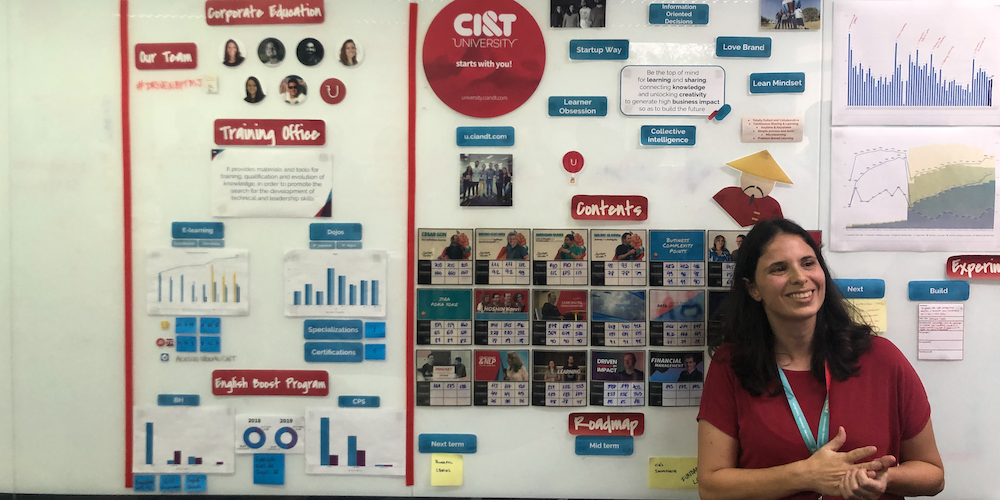
Our gemba walks in Brazil
FEATURE – Last month, the Lean Global Network met in Brazil for its annual meeting. As part of it, we visited several amazing gembas. Three of our lean coaches reflect on what we learned.
Words: Roberto Priolo, Managing Editor, Planet Lean
Video interviewees: Vyacheslav Boltrukevich, Lean Institute Russia; Vasil Petrov, Lean Institute Bulgaria; and Csaba Bereczki, Lean Enterprise Institute Hungary.
Last month, some fifty of us from the Lean Global Network gathered in Brazil for our annual meeting. For us LGNers, this is always an incredible opportunity to learn from one another, exchange ideas on how we can further advance lean thinking and practice around the world, and – as you’d expect – go to the gemba together.
This year, we were hosted by Lean Institute Brasil (LIB – the second institute to be founded after the Lean Enterprise Institute in the USA) in São Paulo and Rio de Janeiro for one week. The institute’s extraordinary team went out of their way to make us feel welcome and share with us the best examples of lean Brazil has to offer. We were lucky to visit some incredible companies, from Itaú bank to insurance company Sulámerica and even the Globo’s TV studios.
While each and every lean transformation was remarkable in its own way, the biggest takeaway for me was the type of relationship that Lean Institute Brasil has developed with its client companies over the past two decades. At the Lean Global Network, when we talk about “co-learning partnerships”, we ain’t joking: our institute in Brazil is a great example of what it means to learn together with the companies we support. I have seen this over and over again in my travels, every time I visit one of our affiliates around the world. Our work with organizations is based on strong personal relationships and on shared values.
So, it wasn’t surprising to see the incredible warmth of Brazilian people reflected in the rapport the institute has with its clients. Funny enough, it was sometimes hard to tell who worked for the institute and who didn’t. Take Dr Fred, for example, the CEO of a cancer treatment center that Planet Lean readers will surely be familiar with: his incredible experience is now put at the service of other organizations interested in undertaking a lean transformation, often on behalf of or in partnership with Lean Institute Brasil. Fred is also a member of our Lean Healthcare Initiative, a team of healthcare professionals and lean coaches who is researching new ways to shorten the lead-time to develop lean capabilities in the healthcare industry worldwide.
Another striking example of LIB’s work was CI&T, a very successful software company that, these days, receives limited support from the institute but is still an incredibly important partner-in-learning for it. This organization has even begun to provide coaching and support to other firms eager to transform themselves using lean thinking. Many would consider CI&T competition, but not LIB. In fact, LIB’s founder José Ferro often tells the rest of the team: “Let’s hope they continue to succeed. Let’s help them to do so. They are much bigger than us and can help us take lean to places we can’t reach.”
On Day 3 of our stay in Brazil, we split up in three groups and visited three different organizations: cosmetics company Mary Kay, Dr Fred’s cancer treatment center IOV, and software company CI&T. All three provided some great insights for us, but because we couldn’t all be in all three of them, I decided to ask three of my colleagues to comment on what they and their teams saw.
Each team was asked to observe the work and reflect on it using the five dimensions of the Lean Transformation Framework (LTF).

For some reflections from our lean experts and coaches on our gemba walks, check out the video below.
Some of the key takeaways from the visits:
IOV
• Everyone aligned to the organizational mission of becoming a global player against cancer.
• Robust hoshin kanri process focusing on four dimensions.
• Five years ago, the hospital moved to a horizontal value stream-based structure.
• People are engaged at the gemba and leadership is actively involved in the transformation.
• A systematic review of standards across the organization.
CI&T
• A CEO leading by example.
• Strong visual management practices in every team.
• High level of front-line engagement.
• An internal academy providing all kinds of skills and knowledge to people (with some courses held by the CEO himself).
• Remarkable results in Procurement and Legal departments, which have a done a lot of work to understand customer needs and improve service.
Mary Kay
• A clear purpose of enriching women’s life every day.
• Commitment to two-day delivery of products and right first time resolution of customer problems.
• A simulation helps the team understand the best configuration of the line for the following day, based on expected demand (live PDCA).
• A strong focus on people development, with the CEO’s direct engagement.
• Work to engage suppliers using a pull system.
Read more


BOOK REVIEW - In the first of a series of Q&As on the recently published novel Lead With Respect by Freddy and Michael Ballé, Dan Jones explains why this book is a must-read.


1 QUESTION, 5 ANSWERS – Without the active participation of people in improvement activities, lean is nothing but theory. Sadly, engaging folks is easier said than done. We asked five lean practitioners to share their approach to people engagement.


CASE STUDY – An elementary school in Budapest is trying to bring innovation to the education by harnessing the power of lean thinking combined with a solid digital strategy.


FEATURE – Before you decide which method to use to establish pull, you must consider a number of factors. Here’s the things you should be paying attention to.

